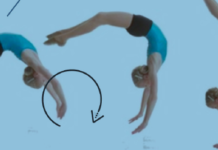Kinesiotape is a method of athletic taping that is becoming increasingly popular among athletes. It has been seen on many professional athletes and is being used in high schools, as well as with physical therapy patients. Kinesiotape is named after kinesiology, the study of skeletal and muscular movement, and may not just be for show. However, researchers are having a hard time finding scientific evidence to back up its medical claims.
Kinesiotape was created in 1979 by Dr. Kenzo Kase, a chiropractor and acupuncturist from Japan. Made from cotton and medical grade adhesive, the tape is designed to stay on for three to five days and protect muscles. The intricate designs the tape creates provide comfort to different muscles in the back, neck, shoulders, knees, wrists and feet, according to kinesiotaping.com, the product’s main website.
Kinesiotape is designed to only work on certain targeted muscles and will not have the same effect on each muscle or person, according to kinesiotaping.com. It takes a certain technique to apply the tape in order for it to adhere to and pull on the proper muscles. Trained specialists take classes to learn the technique.
“It’s not the only thing I’m going to do for treatment, but surely I think it can benefit and help my patients get better,” says Vickie Kerkemeyer, a physical therapist at Excel Sports and Physical Therapy in St. Peters, MO, who is trained in Kinesiotaping.
There is a wave pattern on the adhesive that allows the tape to be stretched at different tensions. Normal taping methods wrap and immobilize the entire strained muscle and often, muscles around it. Kinesiotape, on the other hand, is applied only to the top of the strained area. The muscle or tendon that is injured is never completely covered with tape to ensure that it still has circulation. The tape, skin and tissue over the covered muscle or tendon all move when the person moves. This creates space for lymphatic fluid to flow around the inflamed tissue and cleanse it from the injury, according to WebMD.com.
Kerkemeyer also stated that, “if it’s stretched more and you are lying down, it can help to correct mechanical and pathological problems,” such as issues with joints and how they are placed. This means that if a person's knee was out of place, Kinesiotape could move it back to where it belongs.
However, many researchers who have studied the tape say that the relief athletes receive is only psychological. Skeptics of the tape claim that it gives athletes a false sense of comfort.
Dr. Stephen Novella, M.D., an academic clinical neurologist at Yale University School of Medicine published an article in 2012 on randi.org that states that there is limited research and a lack of positive conclusions. Kinesiotape doesn’t work any better than regular taping would. Anne Heintzelman

This work is licensed under a Creative Commons Attribution-NonCommercial-NoDerivs 3.0 Unported License












